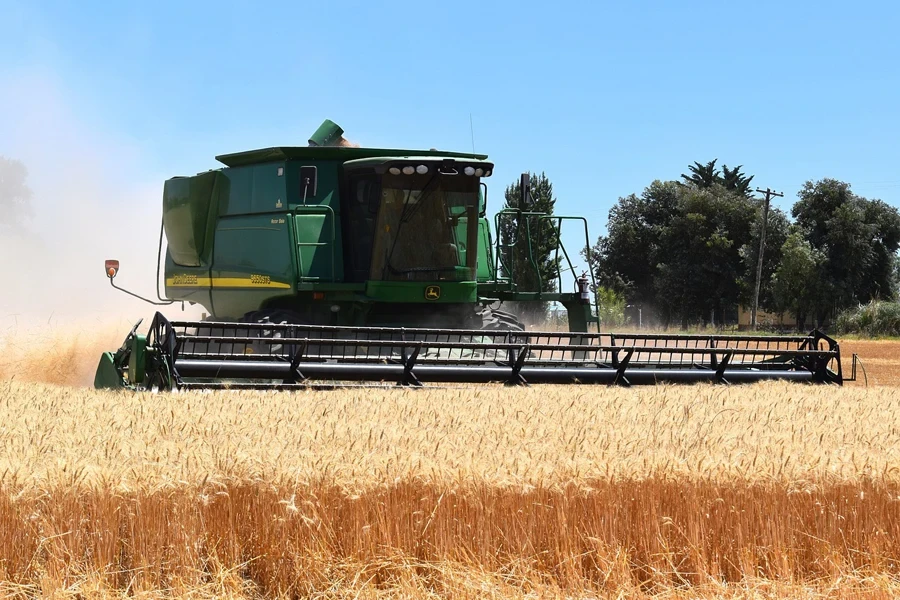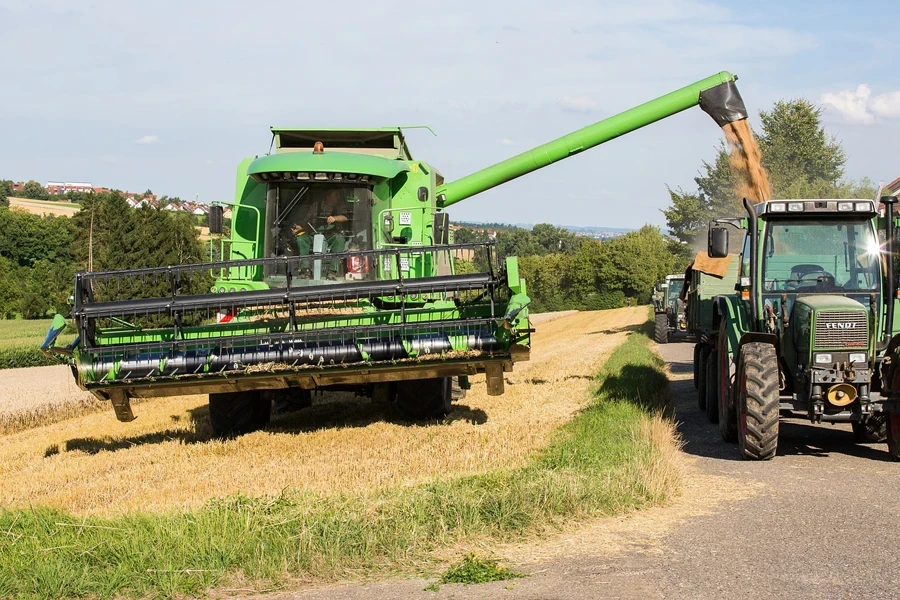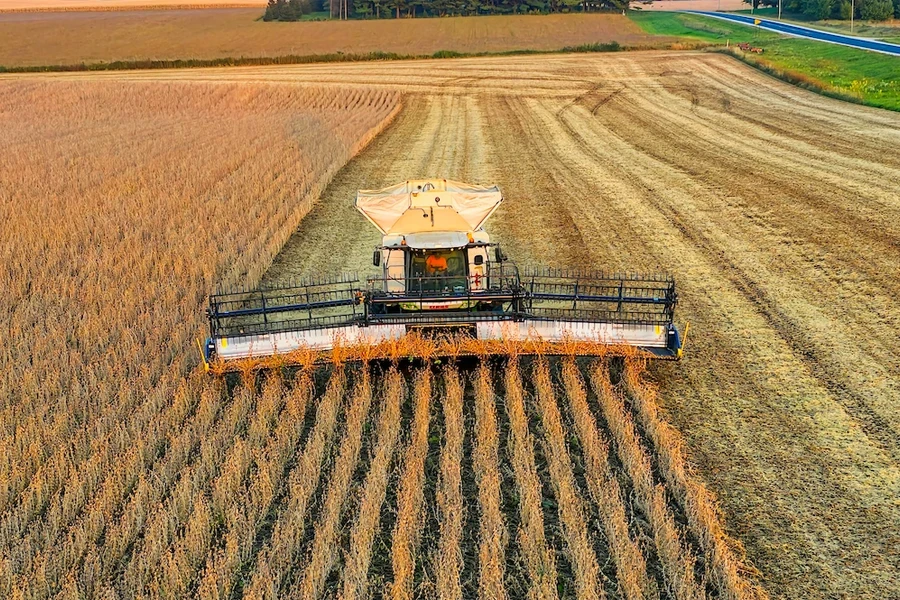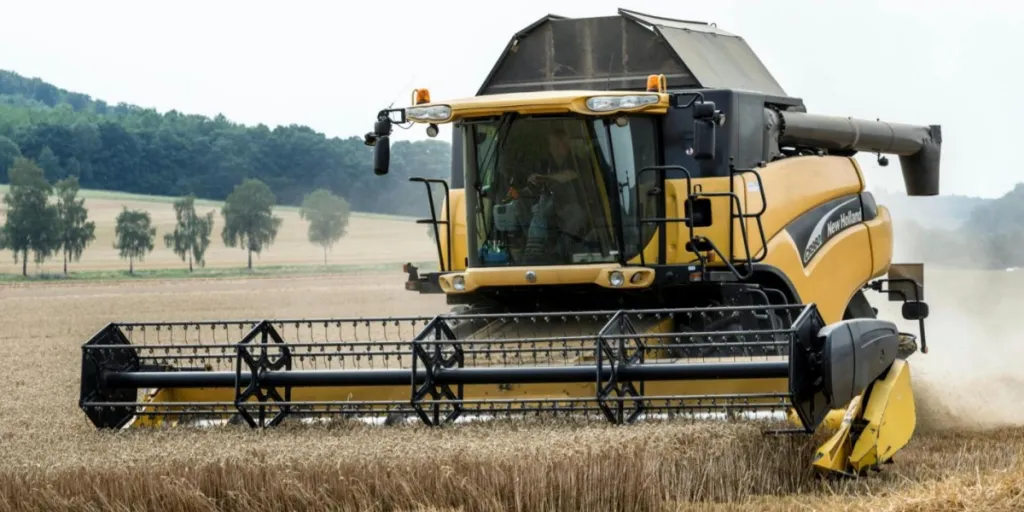Farmers rely on combine harvesters to gather in their crops at harvest time, particularly for large plot industrial agricultural farms of grain crops such as wheat, corn, soybeans and rice. Historically, this has been a fairly manual and mechanical task. However, as technology has advanced, and with the recent boom in the application of artificial intelligence (AI), there has been an increasing momentum towards smart farming and smart harvesting.
New technology applications, if applied appropriately, have the potential to improve harvesting speed, maximize yield, minimize wastage, and reduce manual effort and personnel headcount. This article looks at some of the main innovative developments and trends that are now being applied to harvesting and combine harvesters.
Table of Contents
The growth of smart farming
Exciting technology applications in combine harvesters
Overview of the current trends and developments
Final thoughts
The growth of smart farming
Smart farming, or smart agriculture, are terms to describe the use of the latest technologies to make farming easier, smarter, more efficient and cost effective.
In 2022, the global market for smart farming was valued at USD 18.5 billion. This is projected to grow at a compound annual growth rate (CAGR) of around 12% over the period from 2023 to 2032.
Exciting technology applications in combine harvesters

Combine harvesters carry out the multiple tasks of harvesting, by integrating several jobs into a single pass of the machine. The name ‘combine harvester’ comes from the combination of these tasks. Harvesting involves reaping (cutting the grain grass), threshing (separating the straw from the grain), cleaning (removing mud and stones), and then winnowing (separating the coarse chaff from the seeds within).
Cost and efficiency are always high on the farmer’s agenda. Farmers want to minimize labor costs, while increasing productive working hours. Crop harvesting efficiency is increasingly important, to maximize yield and minimize wastage.
The simple mechanical processes of harvesting leave plenty of opportunities for grain loss and poor quality yields, so with technology making its way across all aspects of harvesting, things are looking up for the farmer.
There are a number of exciting and innovative technology trends that can improve the farmer’s life enormously, and many of these are now being applied to harvesting. These include internet-of-things (IoT), sensors, real time image processing, robotics, autonomous farming, and now AI.
Some of the ways in which technology is being applied include:
- Field and yield mapping, plotting the crop for harvesting
- Use of GNSS and GPS to provide optimum field travel
- Robotic and autonomous driving to reduce the need for human operation and allow for longer working hours
- IoT connectivity to provide real time data on harvesting to multiple systems
- Sensors and cameras, together with AI image processing, to monitor and reduce wastage and maximize yield
- Smart header movement and angle adjustment to provide close cutting even on sloped and uneven ground
- Predictive maintenance to optimize machine usage and reduce downtime and
Overview of the current trends and developments
Field mapping, GNSS and GPS, and autonomous harvesting

The latest farming software is able to map the crop field to be harvested and mapping can be done in different ways. One way to produce a field map is manually, by using mapping software with a satellite image to zoom in and mark boundaries. Most major manufacturers provide field mapping software.
Once a field map is completed, boundaries can be accurately marked, and acreage calculated. The map can then be used for yield mapping, assessing crop productivity to predict yield. Work plans can be added and field historical data reviewed easily. Once the field has been mapped, advanced tracking systems can plan and assist in optimized crop harvesting.
Another way to map a field is to use Global Navigation Satellite Systems (GNSS) together with GPS and integrated wireless and internet capabilities, to provide very accurate positioning. Data captured from previous farming activities can be used, which could be recorded from previous tilling, planting or harvesting. Recorded data can be communicated to local and remote devices quickly and accurately.
When combined with the latest sensors and cameras, together with other smart data capture features, operators and farm managers can gather detailed analytics on performance, efficiency and safety.
These accurate positioning systems also enable autonomous, robotic or remote operation of machinery, improved accuracy and increased safety, collision avoidance, and remote tracking.
For example John Deere provides a computerized Operations Center with tools for field mapping, and their AutoTrac™ software integrates with the Operations Center to plot and control harvesting paths that reduce gaps and overlaps to optimize crop harvesting. Their systems can also be run as fully autonomous and driverless operations.
Kubota offers similar features with their FMIS (Farm Management Information System) that can provide a layered field map that can integrate with sensing and analysis as well as automated driving solutions.
Combining sensors and cameras to maximize harvesting yield

Harvester manufacturers have been grappling with the challenge of balancing harvester speed against grain loss during threshing for many years. Increasing harvester speed with the expectation of better efficiency has been found to cause blockages and increase grain loss, either from falling or when discharged with dust, chaff and straw.
Yanmar have been using sensors together with field maps for over 10 years to find solutions to identify grain loss in real time, and quickly analyze whether that is from threshing or shaking, so that feeders, sieves and discharging valves can be adjusted as required.
The evolution of artificial intelligence systems have made real time camera image processing fast and accurate. This allows integration with other sensor systems to identify points of different yield across the field, and areas of greater or lesser densities of crop. Application of these combined technologies then allows for harvesting speed to be adjusted accordingly, to maintain a consistent crop throughput. This fast real time adjustment serves to maximize yield and minimize wastage, as well as maximize engine efficiency.
For example, New Holland’s IntelliSense technology can calculate the amount of material on the rotors and sieves, and measure grain loss, using sensors at the cleaning shoe together with grain monitoring cameras. The system can then select appropriate action and settings for threshing, fan and sieves.
New Holland models such as the TC5.30 and Yanmar’s models fitting with SMARTASSIST, integrate several intelligent systems to optimize throughput, improve yield, measure grain moisture levels, and improve overall grain quality.
Ground sensors and cameras to adapt to crop height and terrain

With less intelligent harvesters, the crop cutting height has been typically set before commencing harvesting, as have most other settings. The cutter bar adjustments would be made manually on the harvester while it is static, and set for the type of crop to be harvested.
The header that cuts the crop is usually fixed at a horizontal angle. However, a fixed horizontal header is not ideal for fields that are not completely flat, with depressions, ridges or slopes. A gap under the cutter bar would mean an uneven cut, leaving uneven stubble, and potentially lost grain. Many older harvesters do have headers that can be angled manually to fit a slope.

The trend is now towards advanced machines that use ground sensor technology to identify uneven ground, and then to automatically adjust the cutter bar height. Some manufacturers offer adjustable header ‘wings’ to conform to the terrain. These wings extend out from the main assembly to both sides and can adjust up or down independently, to adapt to varied slopes.
John Deere offers an advanced range of new technology harvesters with flexible draper headers that work as independent cutter bars. These adjustable header wings fan out from the center and can adjust up or down independently to match a slope or curved field. Behind the cutter bars, the draper belts also adjust with the header to maintain grain feed with minimal loss. The manufacturer says that the wings can flex by up to 10° which means that the wings tips have a vertical movement of up to 8.5 ft (2.6m).
Similar combinations of sensors and cameras can identify terrain unevenness and adjust harvesting speed accordingly, to increase harvesting speed on upslopes and reduce speed on downslopes. This helps maintain consistent threshing and avoids having insufficient and inefficient grain flow, or excessive flow, wastage and consequential clogging.
John Deere does this using a combination of forward mounted cameras together with field mapping. The integration of these technologies allows the harvester to be predictive rather than just responsive to changing terrain.
Predictive maintenance
Although the many applications of sensor technology assist the farmer in maximizing yield and harvesting efficiency, another important evolution in data capture is the use of remote monitoring to provide predictive maintenance alerts, reducing machine downtime and maintenance costs.
The application of GPS tracking, together with IoT analyzed with AI technology, allows a computerized maintenance management system (CMMS) to keep track of miles (kilometers) covered and hours of operation. These systems can provide alerts on service timing, and can analyze data to provide information on operation rate and equipment efficiency.
Final thoughts
Farming can be a demanding and inefficient job, so any application of technology to make the task easier, and most importantly efficient and cost effective, are welcomed.
The introduction of sensor technologies, including the use of cameras with fast image processing, all brought together with AI, provide so much benefit to the farmer, and these technology applications will only increase in future.
Combine harvesters are becoming smarter, and so much more information is now at the hands of the operator. Some of that information can be acted on independently by the embedded systems, and others inform the operator in fast real time ways.
Farmers are now able to monitor overall field and yield to harvest in smarter ways, reducing harvest path overlaps, and optimizing power and speed on low yield crop areas. The farmer can harvest more, with better quality, and lose less, meaning overall better yields. That means better efficiencies for the farmer, less cost, and more revenue for the investment.
These are exciting times for farming. For more information on combine harvesters available, check out the online showroom at Alibaba.com.




